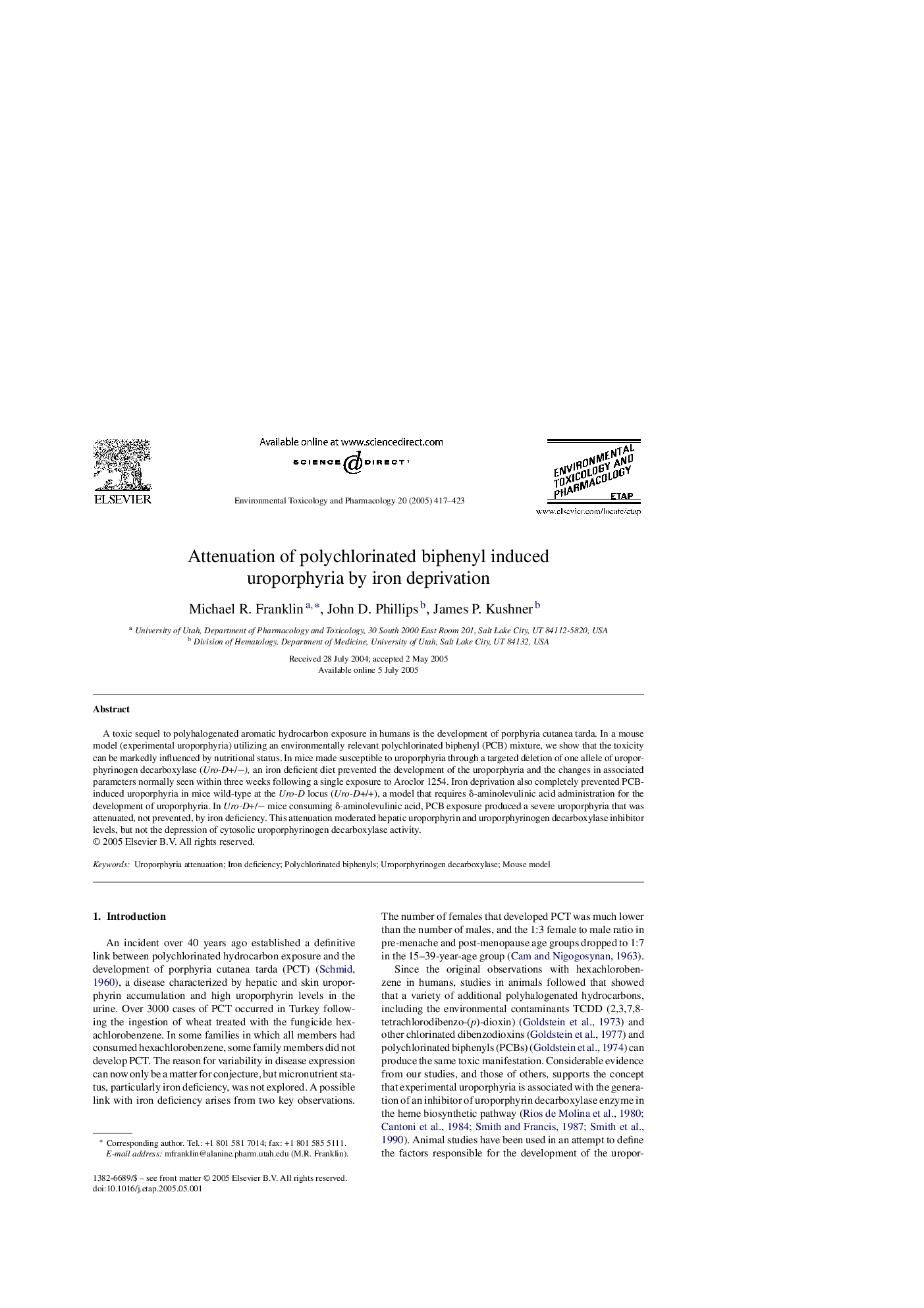| Article ID | Journal | Published Year | Pages | File Type |
|---|---|---|---|---|
| 9030032 | Environmental Toxicology and Pharmacology | 2005 | 7 Pages |
Abstract
A toxic sequel to polyhalogenated aromatic hydrocarbon exposure in humans is the development of porphyria cutanea tarda. In a mouse model (experimental uroporphyria) utilizing an environmentally relevant polychlorinated biphenyl (PCB) mixture, we show that the toxicity can be markedly influenced by nutritional status. In mice made susceptible to uroporphyria through a targeted deletion of one allele of uroporphyrinogen decarboxylase (Uro-D+/â), an iron deficient diet prevented the development of the uroporphyria and the changes in associated parameters normally seen within three weeks following a single exposure to Aroclor 1254. Iron deprivation also completely prevented PCB-induced uroporphyria in mice wild-type at the Uro-D locus (Uro-D+/+), a model that requires δ-aminolevulinic acid administration for the development of uroporphyria. In Uro-D+/â mice consuming δ-aminolevulinic acid, PCB exposure produced a severe uroporphyria that was attenuated, not prevented, by iron deficiency. This attenuation moderated hepatic uroporphyrin and uroporphyrinogen decarboxylase inhibitor levels, but not the depression of cytosolic uroporphyrinogen decarboxylase activity.
Related Topics
Life Sciences
Environmental Science
Health, Toxicology and Mutagenesis
Authors
Michael R. Franklin, John D. Phillips, James P. Kushner,
